88611-67-0
| Name | N-(5-Oxo-5,6,7,8-tetrahydronaphthalen-2-yl)acetamide |
|---|---|
| Synonyms |
N-(5-Oxo-5,6,7,8-tetrahydronaphthalen-2-yl)acetamide
N-(5-oxo-7,8-dihydro-6H-naphthalen-2-yl)acetamide Acetamide, N-(5,6,7,8-tetrahydro-5-oxo-2-naphthalenyl)- N-(5-Oxo-5,6,7,8-tetrahydro-2-naphthalenyl)acetamide |
| Density | 1.2±0.1 g/cm3 |
|---|---|
| Boiling Point | 439.6±34.0 °C at 760 mmHg |
| Melting Point | 127-129ºC |
| Molecular Formula | C12H13NO2 |
| Molecular Weight | 203.237 |
| Flash Point | 193.4±25.8 °C |
| Exact Mass | 203.094635 |
| PSA | 46.17000 |
| LogP | 1.99 |
| Vapour Pressure | 0.0±1.1 mmHg at 25°C |
| Index of Refraction | 1.609 |
Synonym: Section 2 - COMPOSITION, INFORMATION ON INGREDIENTS
Risk Phrases: 22 Section 3 - HAZARDS IDENTIFICATION EMERGENCY OVERVIEW
Harmful if swallowed. Potential Health Effects Eye: May cause eye irritation. Skin: May cause skin irritation. May be harmful if absorbed through the skin. Ingestion: Harmful if swallowed. May cause irritation of the digestive tract. Inhalation: May cause respiratory tract irritation. May be harmful if inhaled. Chronic: Not available. Section 4 - FIRST AID MEASURES Eyes: Flush eyes with plenty of water for at least 15 minutes, occasionally lifting the upper and lower eyelids. Get medical aid. Skin: Get medical aid. Flush skin with plenty of water for at least 15 minutes while removing contaminated clothing and shoes. Ingestion: Get medical aid. Wash mouth out with water. Inhalation: Remove from exposure and move to fresh air immediately. Notes to Physician: Treat symptomatically and supportively. Section 5 - FIRE FIGHTING MEASURES General Information: As in any fire, wear a self-contained breathing apparatus in pressure-demand, MSHA/NIOSH (approved or equivalent), and full protective gear. Extinguishing Media: Use water spray, dry chemical, carbon dioxide, or chemical foam. Section 6 - ACCIDENTAL RELEASE MEASURES General Information: Use proper personal protective equipment as indicated in Section 8. Spills/Leaks: Vacuum or sweep up material and place into a suitable disposal container. Section 7 - HANDLING and STORAGE Handling: Avoid breathing dust, vapor, mist, or gas. Avoid contact with skin and eyes. Storage: Store in a cool, dry place. Store in a tightly closed container. Section 8 - EXPOSURE CONTROLS, PERSONAL PROTECTION Engineering Controls: Use adequate ventilation to keep airborne concentrations low. Exposure Limits CAS# 88611-67-0: Personal Protective Equipment Eyes: Not available. Skin: Wear appropriate protective gloves to prevent skin exposure. Clothing: Wear appropriate protective clothing to prevent skin exposure. Respirators: Follow the OSHA respirator regulations found in 29 CFR 1910.134 or European Standard EN 149. Use a NIOSH/MSHA or European Standard EN 149 approved respirator if exposure limits are exceeded or if irritation or other symptoms are experienced. Section 9 - PHYSICAL AND CHEMICAL PROPERTIES Physical State: Solid Color: off-white Odor: Not available. pH: Not available. Vapor Pressure: Not available. Viscosity: Not available. Boiling Point: Not available. Freezing/Melting Point: 124 - 126 deg C Autoignition Temperature: Not available. Flash Point: Not available. Explosion Limits, lower: Not available. Explosion Limits, upper: Not available. Decomposition Temperature: Solubility in water: Specific Gravity/Density: Molecular Formula: C12H13NO2 Molecular Weight: 203 Section 10 - STABILITY AND REACTIVITY Chemical Stability: Not available. Conditions to Avoid: Incompatible materials. Incompatibilities with Other Materials: Oxidizing agents, reducing agents, acids, bases. Hazardous Decomposition Products: Nitrogen oxides, carbon monoxide, carbon dioxide. Hazardous Polymerization: Has not been reported Section 11 - TOXICOLOGICAL INFORMATION RTECS#: CAS# 88611-67-0 unlisted. LD50/LC50: Not available. Carcinogenicity: N1-(5-Oxo-5,6,7,8-tetrahydronaphthalen-2-yl)acetamide - Not listed by ACGIH, IARC, or NTP. Section 12 - ECOLOGICAL INFORMATION Section 13 - DISPOSAL CONSIDERATIONS Dispose of in a manner consistent with federal, state, and local regulations. Section 14 - TRANSPORT INFORMATION IATA Shipping Name: Not regulated. Hazard Class: UN Number: Packing Group: IMO Shipping Name: Not regulated. Hazard Class: UN Number: Packing Group: RID/ADR Shipping Name: Not regulated. Hazard Class: UN Number: Packing group: Section 15 - REGULATORY INFORMATION European/International Regulations European Labeling in Accordance with EC Directives Hazard Symbols: XN Risk Phrases: R 22 Harmful if swallowed. Safety Phrases: S 24/25 Avoid contact with skin and eyes. WGK (Water Danger/Protection) CAS# 88611-67-0: No information available. Canada None of the chemicals in this product are listed on the DSL/NDSL list. CAS# 88611-67-0 is not listed on Canada's Ingredient Disclosure List. US FEDERAL TSCA CAS# 88611-67-0 is not listed on the TSCA inventory. It is for research and development use only. SECTION 16 - ADDITIONAL INFORMATION N/A |
| Hazard Codes | Xn: Harmful; |
|---|---|
| Risk Phrases | R22 |
| Safety Phrases | 24/25 |
| HS Code | 2924299090 |
|
~% 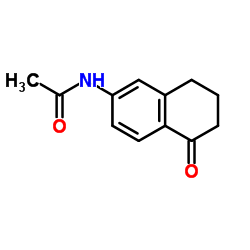
88611-67-0 |
| Literature: WO2008/76336 A2, ; Page/Page column 78 ; WO 2008/076336 A2 |
|
~% 
88611-67-0 |
| Literature: Journal of Medicinal Chemistry, , vol. 19, # 4 p. 472 - 475 |
|
~% 
88611-67-0 |
| Literature: Bioorganic and Medicinal Chemistry, , vol. 19, # 18 p. 5539 - 5552 |
|
~% 
88611-67-0 |
| Literature: Bioorganic and Medicinal Chemistry, , vol. 19, # 18 p. 5539 - 5552 |
|
~% 
88611-67-0 |
| Literature: Bioorganic and Medicinal Chemistry, , vol. 19, # 18 p. 5539 - 5552 |
| Precursor 5 | |
|---|---|
| DownStream 3 | |
| HS Code | 2924299090 |
|---|---|
| Summary | 2924299090. other cyclic amides (including cyclic carbamates) and their derivatives; salts thereof. VAT:17.0%. Tax rebate rate:13.0%. . MFN tariff:6.5%. General tariff:30.0% |




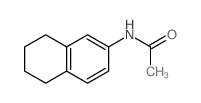

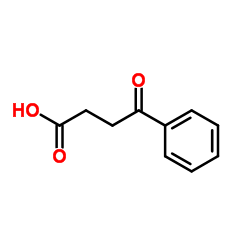
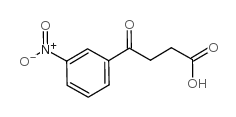
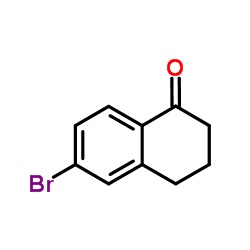
![2-chloro-N-(3-oxo-4,4a,5,6-tetrahydro-2H-benzo[h]cinnolin-8-yl)propanamide structure](https://image.chemsrc.com/caspic/156/121866-04-4.png)